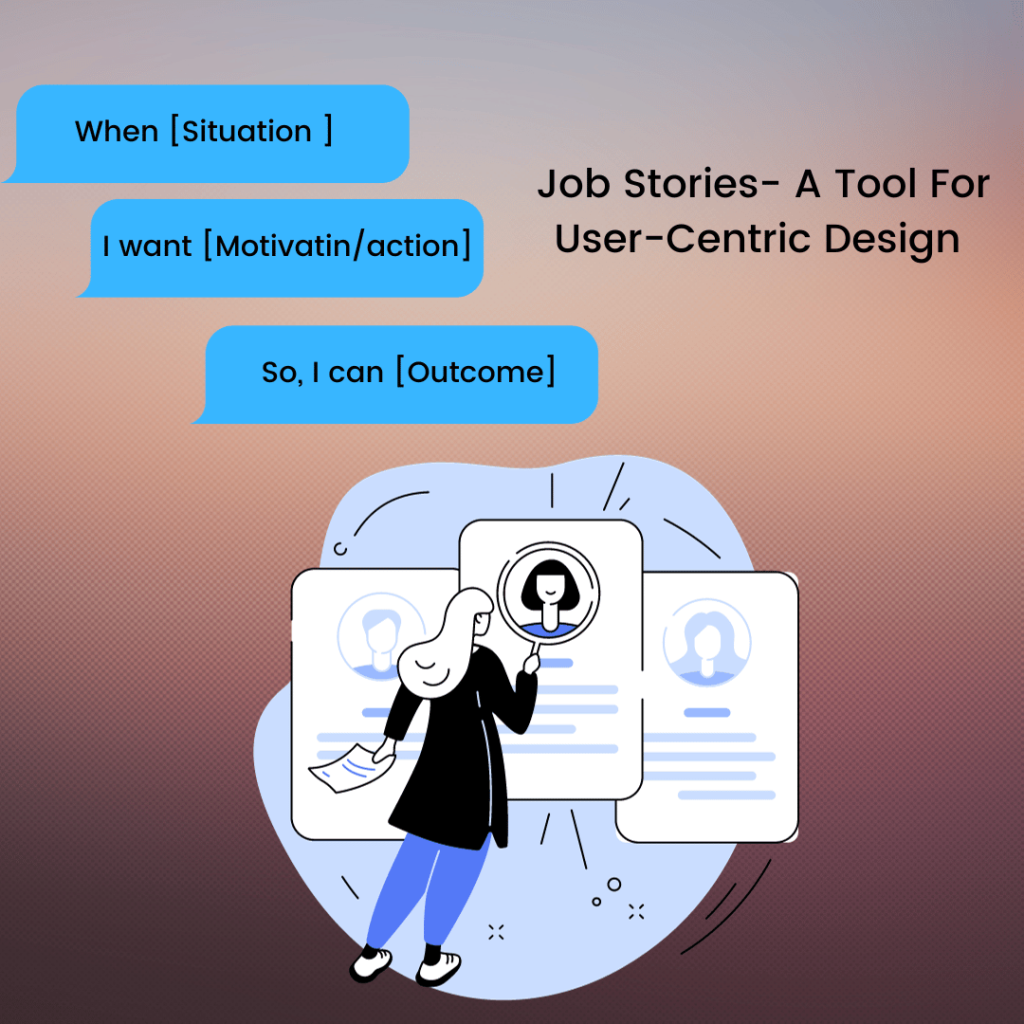
Introduction
In the realm of product design and development, understanding the user’s needs and context is paramount. This is where ‘Job Stories’ come into play, offering a more situation-centred approach than traditional user stories.
What are Job Stories?
Job stories are a tool to capture the essence of what a user needs in a specific context. They differ from traditional user stories by focusing on the situation, the motivation, and the desired outcome, rather than on user personas or roles. The format typically follows: When [situation], I want to [motivation/action], so I can [outcome].
Why Use Job Stories?
- Contextual Relevance: They place emphasis on the situation, making it highly relevant to the user’s current context and environment.
- Flexibility: Job stories are adaptable to changing user environments and can be more easily modified than user stories which are tied to specific user personas.
- Outcome-Focused: They align the development process with the end goals or outcomes that users care about, ensuring that the final product is not just feature-rich but also meaningful to the users.
Real-World Examples
- VAT Customers:
- When I am reviewing my company’s purchases and preparing for tax submissions, I want to receive invoices that include a comprehensive breakdown of VAT charges, so I can accurately calculate and report VAT expenses, ensuring compliance with tax regulations.
- Non-VAT Customers:
- When I am reconciling my company’s monthly expenses, I want to receive invoices that clearly indicate no VAT charges are applicable, so I can manage our accounting processes efficiently and accurately.
Implementing Job Stories in Your Workflow
- Identify the Situation: Start with the specific scenario or problem your user is facing.
- Understand User Motivation: Delve into what the user wants to achieve in this situation.
- Focus on the Desired Outcome: Clarify what success looks like for the user.
Conclusion
Job storie offer a nuanced and effective way of understanding user needs. By focusing on the situation rather than the user’s role. They help in creating products that are not just functional but also empathetic to the user’s context. Adopting job stories can lead to more user-centric product development, ultimately resulting in products that truly resonate with the end user.

